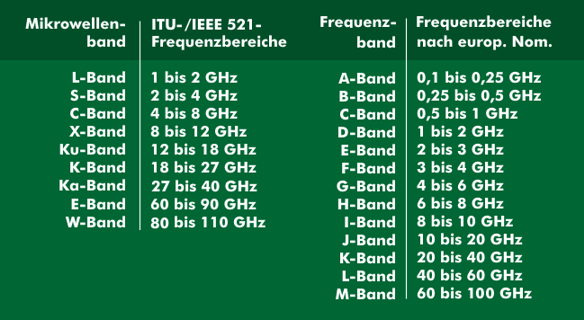K band
In the case of the K-band, the main issue is the differentiation of the nomenclature, since both nomenclatures, the traditional one of the International Telecommunication Union( ITU) and the European NATO nomenclature, use the designation K-band.
Thus, the frequency range in the NATO nomenclature is between 20 GHz and 40 GHz, while that of the International Telecommunication Union (ITU) is between 18 GHz and 27 GHz. In the European nomenclature, the K band lies between the J band and the L band, and in the traditional one between the Ku band and the Ka band. The designation "K" is derived from the German word "kurz," which indicates a short wavelength. The classical K-band is about wavelengths between 1.7 cm and 1.1 cm, the European between 1.5 cm and 0.75 cm.
Since the free- space attenuation of the atmosphere increases with increasing transmission frequency, the K-band and the frequency bands above it are only suitable for applications over short distances, e.g. it is used for airfield surveillance and for short-range radars in automotive engineering.

